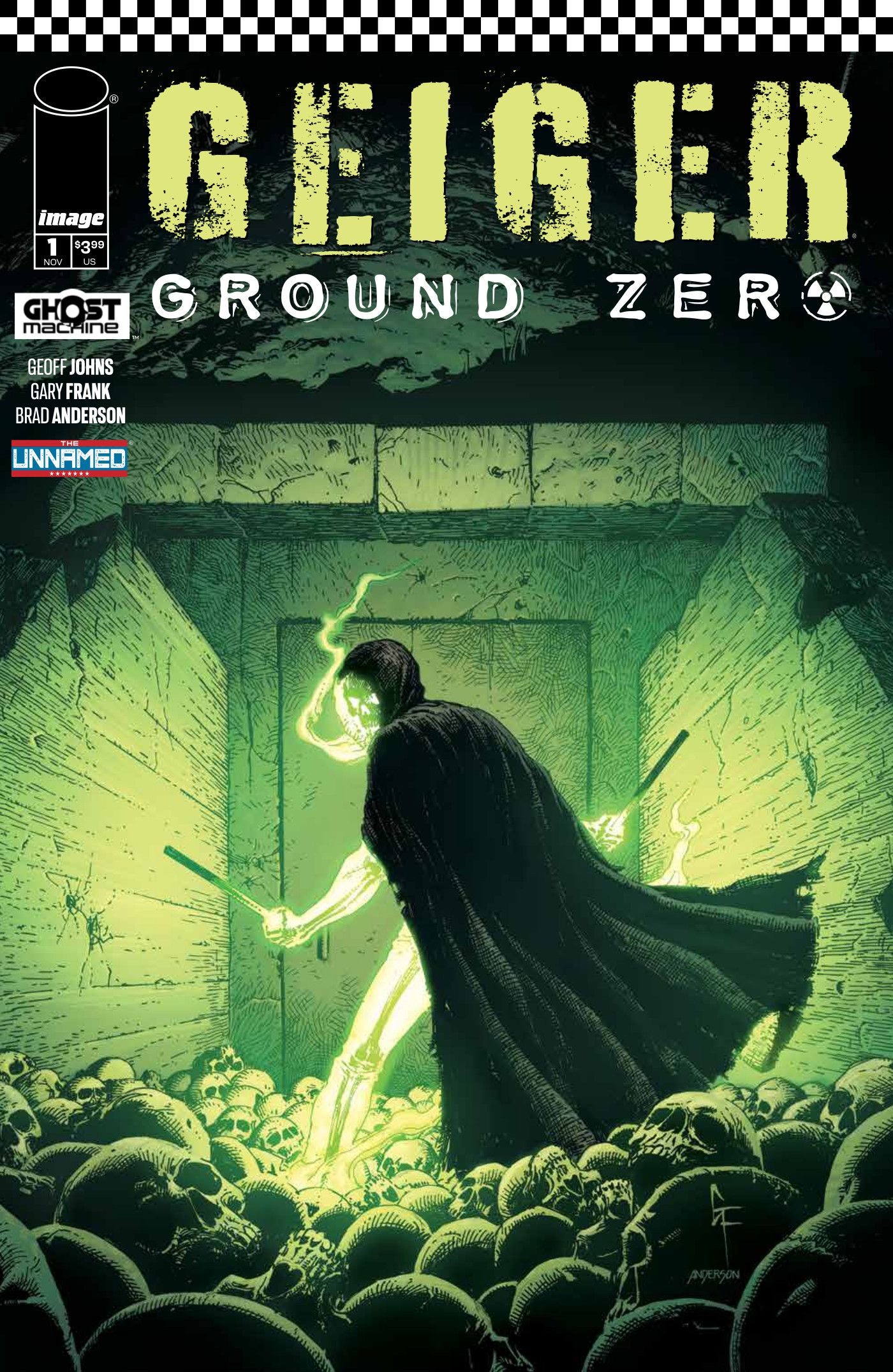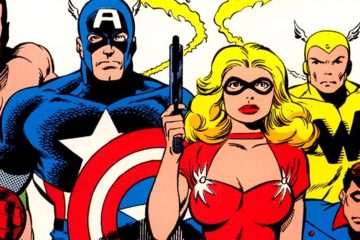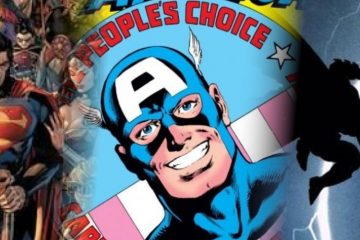Image Comics presents Geiger: Ground Zero #1, returning once more to THE UNNAMED UNIVERSE and the nuclear wasteland of Geiger in an all-new two-part prequel series. Written by Geoff Johns, illustrated by Gary Frank, with colors by Brad Anderson and letters by Rob Leigh, reuniting the original 2021 creative team that catapulted Geiger to its initial success. Geiger follows Tariq Geiger, an irradiated hero who walks the nuclear wasteland that was once America in the year 2050, becoming an enigma and folk hero of the apocalypse.Geiger: Ground Zero #1 is set six months after the nuclear strike that created Geiger in his final incarnation — a Russian scientist desperate for help from a militia agrees that if they escort him to his wife, he will assist them with killing a mysterious green glowing man. Picking through the Nevada desert, Molotov tries his best to pick through the data and understand their target as the reader flashes back to the day before the bomb dropped, showing Tariq’s final hours before the apocalypse. Back in the present, a climactic showdown reveals a shocking development about Geiger’s past that completely recontextualizes his future.The art of Geiger: Ground Zero #1 is complex and visually striking, with Frank working in flurries of thin, fragile lines that flow together to create stunningly detailed illustrations. The abundance of lines creates incredible hatching and shading, infusing every panel with a staggering amount of texture and dimension. This texture also reinforces the oppressive tone of the story, adding heaviness and darkness to the art that emphasizes the rugged environments and strained, hollow human faces. The backgrounds are terrific, often laden with complicated details, industrial squalor, and dramatic natural landscapes, which infuse a sense of yawning emptiness and ruin into the world of Geiger, acting as its own more subtle form of exposition. The figure drawings are similarly impressive, his proportions always well-considered and executed, with special mention deserved for his characters. Dramatically expressive, Frank’s characters have an immediacy and emotiveness that makes them feel animated on the page, imbued with a distinct rawness and vulnerability that arises both from the overdetermination of lines creating the expressions in exorbitant detail and from the great choices made in terms of moments to capture. The brief action sequences are absorbing and dramatic, with excellent paneling that creates a crushing sense of motion and momentum.
Image Comics presents Geiger: Ground Zero #1, returning once more to THE UNNAMED UNIVERSE and the nuclear wasteland of Geiger in an all-new two-part prequel series. Written by Geoff Johns, illustrated by Gary Frank, with colors by Brad Anderson and letters by Rob Leigh, reuniting the original 2021 creative team that catapulted Geiger to its initial success. Geiger follows Tariq Geiger, an irradiated hero who walks the nuclear wasteland that was once America in the year 2050, becoming an enigma and folk hero of the apocalypse.
Geiger: Ground Zero #1 is set six months after the nuclear strike that created Geiger in his final incarnation — a Russian scientist desperate for help from a militia agrees that if they escort him to his wife, he will assist them with killing a mysterious green glowing man. Picking through the Nevada desert, Molotov tries his best to pick through the data and understand their target as the reader flashes back to the day before the bomb dropped, showing Tariq’s final hours before the apocalypse. Back in the present, a climactic showdown reveals a shocking development about Geiger’s past that completely recontextualizes his future.
The art of Geiger: Ground Zero #1 is complex and visually striking, with Frank working in flurries of thin, fragile lines that flow together to create stunningly detailed illustrations. The abundance of lines creates incredible hatching and shading, infusing every panel with a staggering amount of texture and dimension. This texture also reinforces the oppressive tone of the story, adding heaviness and darkness to the art that emphasizes the rugged environments and strained, hollow human faces. The backgrounds are terrific, often laden with complicated details, industrial squalor, and dramatic natural landscapes, which infuse a sense of yawning emptiness and ruin into the world of Geiger, acting as its own more subtle form of exposition. The figure drawings are similarly impressive, his proportions always well-considered and executed, with special mention deserved for his characters. Dramatically expressive, Frank’s characters have an immediacy and emotiveness that makes them feel animated on the page, imbued with a distinct rawness and vulnerability that arises both from the overdetermination of lines creating the expressions in exorbitant detail and from the great choices made in terms of moments to capture. The brief action sequences are absorbing and dramatic, with excellent paneling that creates a crushing sense of motion and momentum.
#REVIEW #Image #Comics #Geiger #Ground
Note:- (Not all news on the site expresses the point of view of the site, but we transmit this news automatically and translate it through programmatic technology on the site and not from a human editor. The content is auto-generated from a syndicated feed.))



